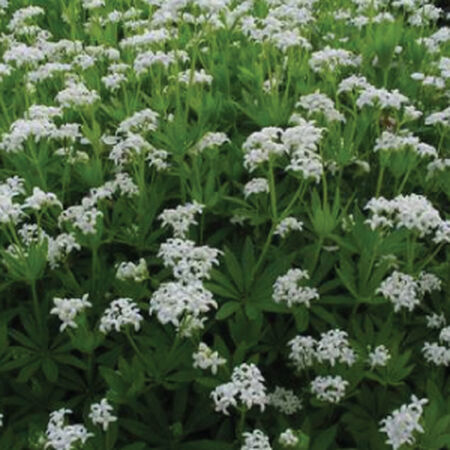Sweet Woodruff, Galium Odoratum Seeds
Out of Stock
Key Attributes
Key Attributes
Product Details
Plant Height
6-12"Botanical Name
Galium OdoratumSeed Type
SeedAdditional Characteristics
Ground CoverSeeds Per Gram
178Seeds Per Pound
80,640Packet
25 SeedsSow Depth
1/4"Seeds Per Ounce
5,040Breed
Open-pollinatedSun
Full SunGrowing Conditions
Ground CoverLife Cycle
PerennialSow Method
TransplantCategories
FlowersDays To Maturity (# Days)
115Components
Growing Instructions
![]() Learning Download: How to Grow Galium Odoratum
Learning Download: How to Grow Galium Odoratum
Galium Odoratum, also known as Sweet Woodruff, blooms in the spring and is low maintenance. It is frequently grown in herb gardens, rock gardens, natural areas, border in the shade or as groundcover or edging.
Before Planting: You can start the seeds indoors up to 10 weeks before the season’s last frost date and then transplant outside after the last frost.
Planting: Plant the seeds directly in the garden in the spring, and to do so, lightly spread the seeds over the area and barely cover them with soil or peat moss.
Watering: Galium Odoratum should be watered only in conditions of prolonged drought.
Fertilizer: This plant does not require any fertilization to better its growth.
Days to Maturity: Galium Odoratum will begin to bloom in the spring.
Harvesting: Galium Odoratum is often used in potpourri and satchels. Harvest the leaves immediately after the plants bloom. Tie the branches in bunches and hang to dry in a warm, dark place with low humidity.
Tips: Since this plant has creeping roots and self-seeds, if its growth is too aggressive, gardeners can utilize withholding water as maintenance for controlling the growth if it is too aggressive.
Shipping Schedule
Our Seed Promise
 "Agriculture and seeds" provide the basis upon which our lives depend. We must protect this foundation as a safe and genetically stable source for future generations. For the benefit of all farmers, gardeners and consumers who want an alternative, we pledge that we do not knowingly buy or sell genetically engineered seeds or plants.
"Agriculture and seeds" provide the basis upon which our lives depend. We must protect this foundation as a safe and genetically stable source for future generations. For the benefit of all farmers, gardeners and consumers who want an alternative, we pledge that we do not knowingly buy or sell genetically engineered seeds or plants.
The mechanical transfer of genetic material outside of natural reproductive methods and between genera, families or kingdoms, poses great biological risks as well as economic, political, and cultural threats. We feel that genetically engineered varieties have been insufficiently tested prior to public release. More research and testing is necessary to further assess the potential risks of genetically engineered seeds. Further, we wish to support agricultural progress that leads to healthier soils, to genetically diverse agricultural ecosystems, and ultimately to healthy people and communities.
To learn more about the "Safe Seed Pledge" please visit www.councilforresponsiblegenetics.org.

